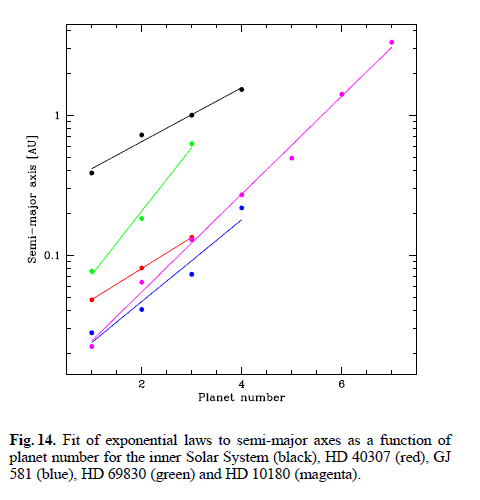2019.06.04 11:45
今天新东方在线小编给大家整理了雅思阅读素材积累:Bode's law lives!帮助大家更好的备考雅思阅读考试,更多雅思阅读素材内容,欢迎随时关注新东方在线雅思网。
SOMEWHERE, the spirit of Johann Elert Bode is smiling. Bode was a German astronomer who popularised a mathematical rule, which came to be known as Bode's law, in a book published in 1772. According to Bode's law, there is a hidden pattern in the spacing of the orbits of the planets. The orbits of Mercury, Venus, Earth, Mars, Jupiter and Saturn fit neatly into this pattern; Uranus, discovered in 1781, also obeyed the law. But there was a problem: Bode's law predicted that there ought to be a planet between Mars and Jupiter. It was only in 1801 with the discovery of Ceres, the largest of the asteroids, that this gap was neatly plugged.
In the two centuries since, however, Bode's law has fallen from grace. Ceres turned out to be just one of many asteroids orbiting between Mars and Jupiter, rather than a proper planet. Neptune, discovered in 1846, had a much smaller orbit than the law predicted; and Pluto, which is now classed as a "dwarf planet", also failed to fit in with Bode's neat pattern when it was found in 1930. Bode's law, it seemed, was just a coincidence, an example of the human mind's tendency to find a meaningful pattern where none exists.
But the discovery of a new planetary system by a group of astronomers at the European Southern Observatory, led by Christophe Lovis of the University of Geneva, has reawakened interest in the old rule. Indeed, their paper announcing the discovery refers to Bode's law by name (it actually calls it the Titius-Bode law, namechecking the Prussian astronomer whose idea Bode stole). The system consists of at least five, and possibly as many as seven, planets orbiting a sun-like star called HD 10180, located 127 light-years away in the constellation of Hydrus. As the planets orbit the star, they pull it to and fro, causing telltale wobbles in the star's light that can be detected from Earth. Careful analysis of these wobbles reveals the masses of the planets and the sizes and spacing of their orbits.
And it turns out that the spacing of the orbits of the planets around HD 10180 obey a version of Bode's law. The planets look very different from those in the Earth's solar system: five of them are about the size of Neptune, and are closer to their star than Mars is to the sun. The other two planets, for which the evidence is not quite so strong, are a Saturn-like planet orbiting further out, and a planet only slightly heavier than Earth orbiting very close to the star, so that it completes an orbit every 1.18 Earth days. But never mind that. The fit with Bode's law is striking, and the astronomers show in their paper that a few other known multiplanetary systems around other stars exhibit a similar fit too, though with fewer planets (see chart).

There is, in other words, starting to be enough evidence to suggest that Bode's law might not be a complete fluke. But why might planetary orbits obey such neat patterns, at least some of the time? The researchers speculate that it could be a side-effect of the mechanism by which planetary systems form. Dr Lovis and his colleagues suggest that when many planetary systems first emerge from a disk of dust and gas around a young star, they are "saturated" with planets. Most of the planets are then weeded out by collisions and ejections, caused by gravitational interaction between adjacent planetary bodies. Systems with regular planetary spacings then turn out to have the greatest long-term stability, so that they can be observed today. The researchers observe that "the orbital distances of successive planets with similar masses will tend to obey an approximate exponential law, much like the century-long debated and polemical Titius-Bode law in the Solar System."
There are several caveats, of course. "We emphasize that we do not consider these Titius-Bode-like 'laws' as having any other meaning than a possible signature of formation processes," the astronomers insist. Such laws may only apply to relatively small planets relatively close to their suns. Systems dominated by very large "super-Jupiter" planets are probably far more chaotic, with gravitational tussles causing planets to end up in all sorts of strange orbits. And Dr Lovis and his colleagues note that "the physics of planet formation is so diverse and complex that we do not expect any universal rule on planet ordering to exist."
Still, the idea that there might be something to Bode's law after all has been advanced by a few researchers in recent years as a serious theoretical possibility. As planet-finding technology improves, more planets are found around other stars and the number of known multiplanetary systems continues to increase, this modern-day revival of Bode's law can now be put to the test.

扫码添加助教号
免费获取最新雅思口语题库
